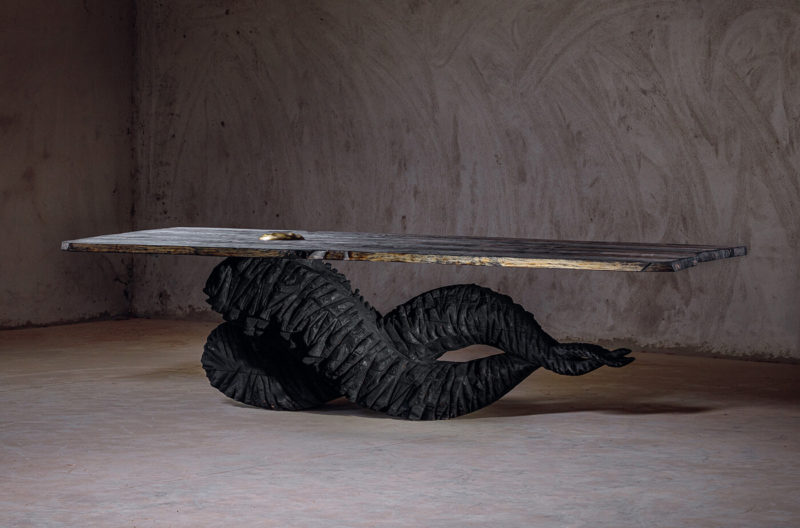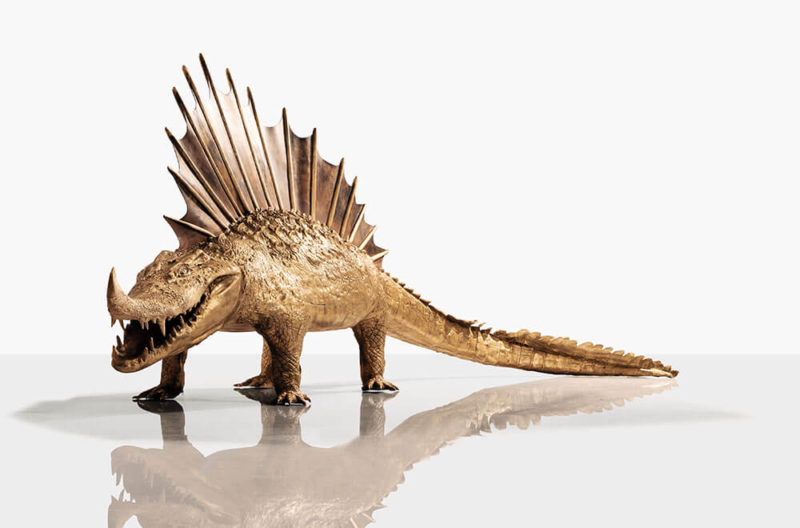Objects of Desire: Surrealism and Design 1924-Today
A seductive argument for Surrealism's role in the history of design.
The Design Museum, London
Until 19 February 2023
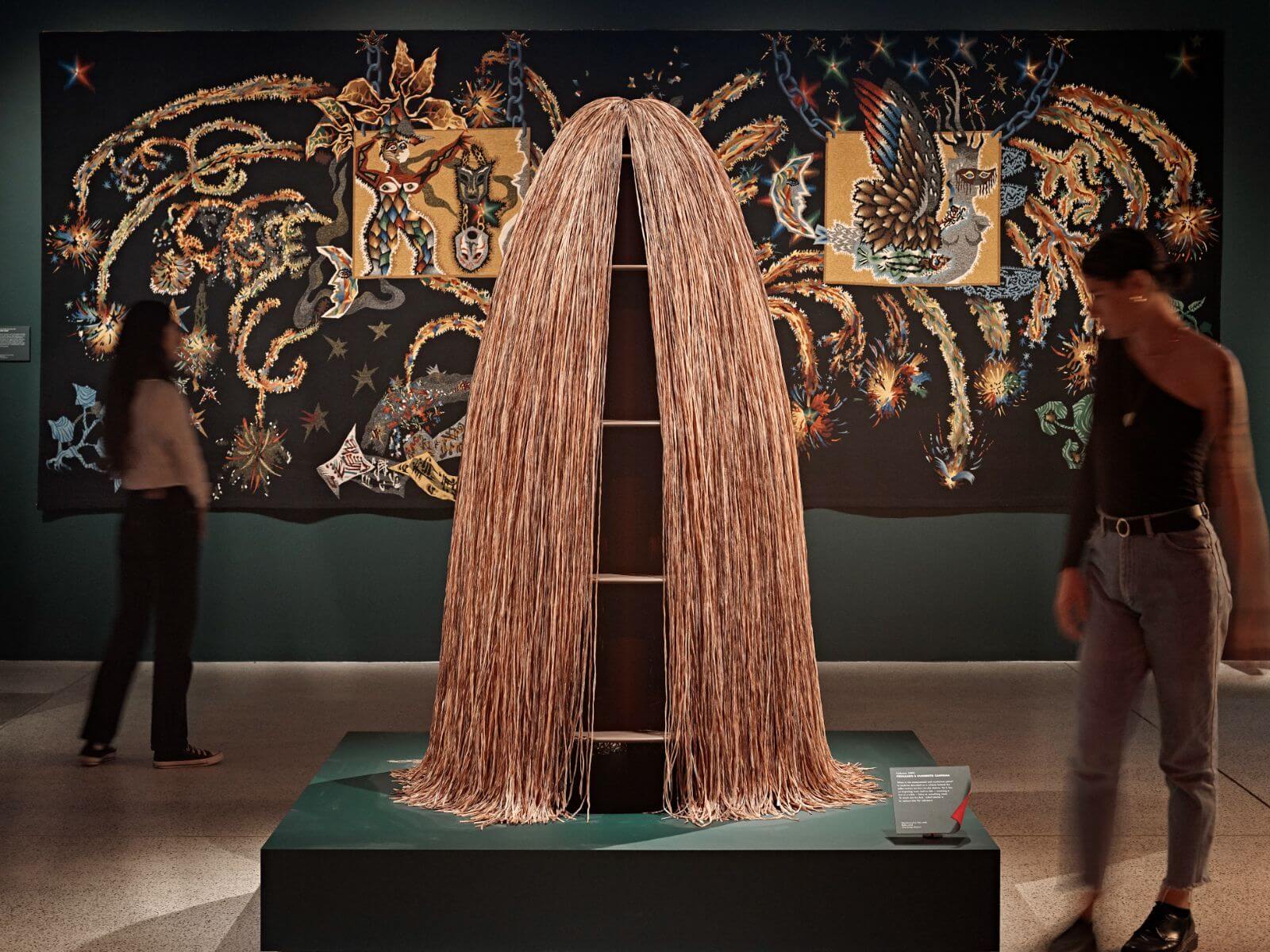
Exhibition view, ‘Objects of Desire’ at The Design Museum, London, with Fernando and Humberto Campana, ‘Cabana’ cabinet, 2003
COURTESY: The Design Museum / PHOTOGRAPH: Andy Stagg
THIS EXHIBITION HAS one overriding intention – to persuade its audience that Surrealism has been a force within design since the Paris movement’s inception in 1924. Far from merely aberrant, though aberrance is its driving energy, as a mode of thought and source of imagery Surrealism has been a continuous thread in the art and design of the last century, running alongside and occasionally interbreeding with the dominant narrative of modernism.
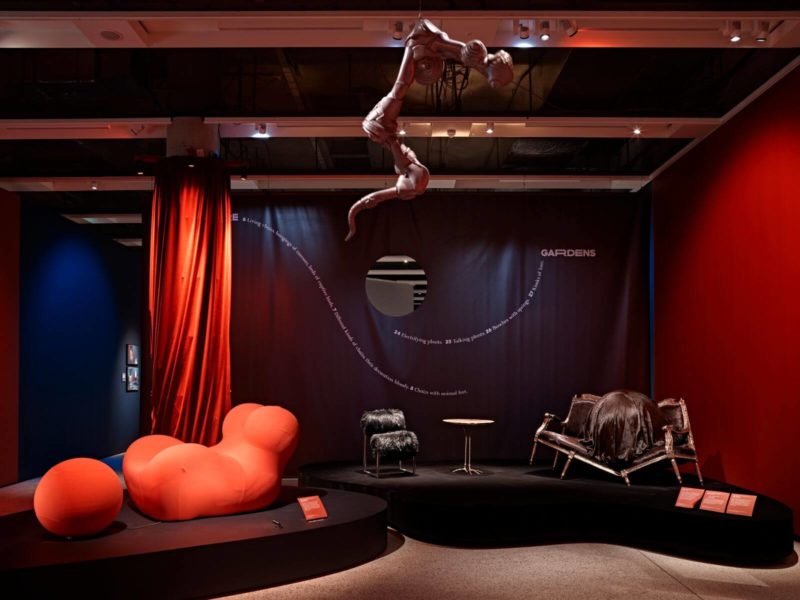
Exhibition view, ‘Objects of Desire’ at The Design Museum, London, with (left to right) Gaetano Pesce, ‘UP5_6: La Mamma (Mother)’, 1973-88 edition of 1969 original; Nanda Vigo, ‘Due più (Two more)’, 1971; Meret Oppenheim, ‘Traccia (Table with Bird’s Feet)’, 1983, no. I/II authorised edition of 1939 original; Nina Saunders, ‘The Whirlwind is in the Thorn Bush’, 2017
COURTESY: The Design Museum / PHOTOGRAPH: Andy Stagg
Surrealism has seen a recent surge in interest. In the UK alone, there has been Tate Modern’s far-reaching exhibition, ‘Surrealism Beyond Borders’, earlier this year, as well as focused exhibitions on Leonora Carrington (Tate Liverpool, 2014-15) and Dorothea Tanning (Tate Modern 2019). This exhibition explores an important dimension of that movement, arguing for its intrinsic place in the history of design as much as art. It has drawn together outstanding loans to show the best in Surrealist and Surrealism-inspired design, from furniture and interior design to fashion and photography. There are iconic artworks from Surrealist pioneers such as Salvador Dalí, Dora Maar, Man Ray, Leonora Carrington and Lee Miller. And then there are examples of art and design from the last 60 years which revel in the licence offered by Surrealism to create according to rules of feeling, dream and an imaginative logic at odds with the requirements of function or the apparent rationality of dominant social norms.
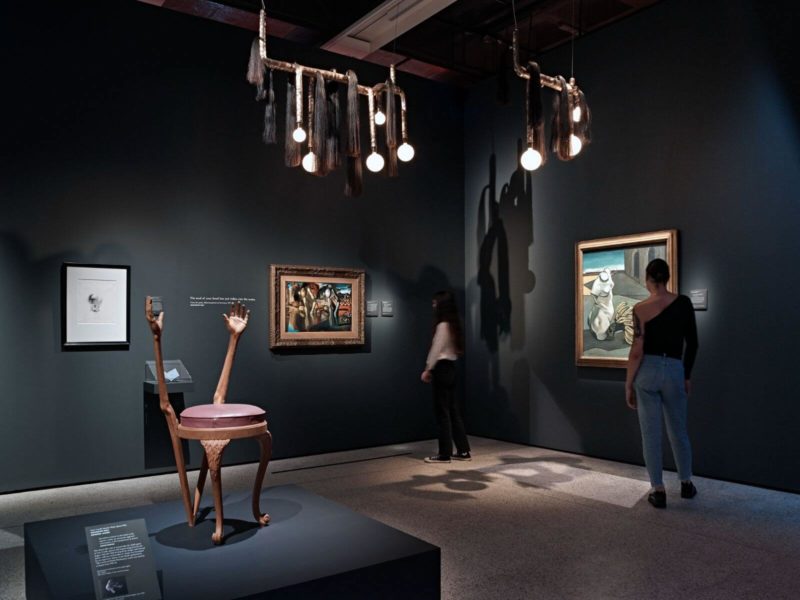
Exhibition view, ‘Objects of Desire’ at The Design Museum, London, with Salvador Dalí and Edward James, ‘Cat’s Cradle Hands Chair’, circa 1936; Jonathan Trayte, ‘Luna Camel 1&2’, 2022
COURTESY: The Design Museum / PHOTOGRAPH: Andy Stagg
In parallel, this exhibition also reveals that if design has drawn on Surrealism, Surrealism too has been fascinated by functional designed objects, and their uncanny place in our lives. It is no accident that the founding Surrealists seized the lines of the French poet Lautréamont, describing a 16-year-old youth, as their guiding metaphor: “Beautiful as the chance meeting on a dissecting table of a sewing machine and an umbrella.” Surrealism requires design for its fullest expression.
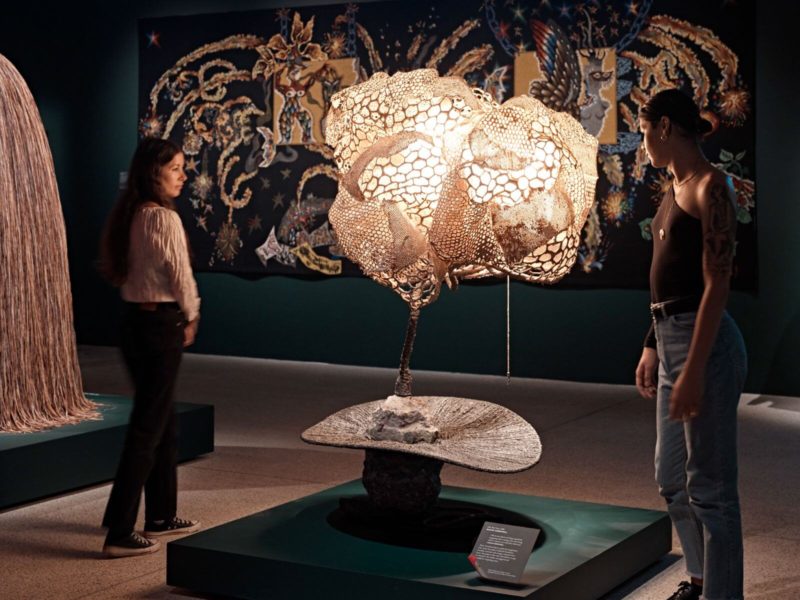
Exhibition view, ‘Objects of Desire’ at The Design Museum, London, with Nacho Carbonell, ‘Lily Pad Tree’, 2018
COURTESY: The Design Museum / PHOTOGRAPH: Andy Stagg
One of the highlights of the show is a room-set recreating one interior of Monkton House, the home of English poet and Surrealist patron, Edward James, who commissioned the manufacture of his friend Dalí’s ‘Mae West Lips’ sofa, among many other surrealist objects. For the dreams and imaginings of Surrealism’s adherents sought realisation in objects, very often objects of use that might cohabit with the humans whose deepest fears or desires they expressed.
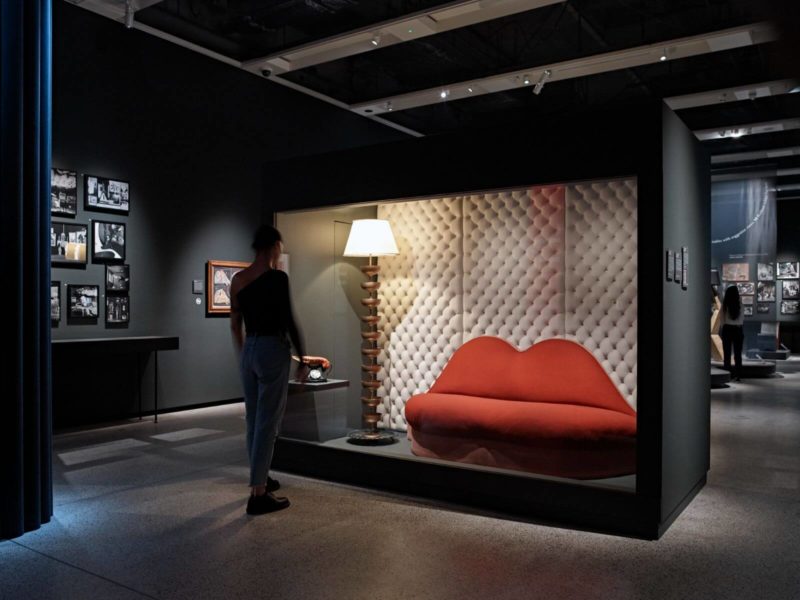
Exhibition view, ‘Objects of Desire’ at The Design Museum, London with Salvador Dalí and Edward James, ‘Mae West’s Lips’ sofa, circa 1938
COURTESY: The Design Museum / PHOTOGRAPH: Andy Stagg
If you sense that craving within Surrealist painting, it is also there in the Surrealist obsession with ordinary found objects. Highlights of the show include Dorothea Tanning’s ‘Pincushion to Serve as Fetish’ (1965) and Gae Aulenti’s 1993 ‘Tour Table’ on bicycle wheels, which looks back to Marcel Duchamp’s 1913 readymade sculpture ‘Roue de Bicyclette’ (Bicycle Wheel).

Exhibition view, ‘Objects of Desire’ at The Design Museum, London
COURTESY: The Design Museum / PHOTOGRAPH: Andy Stagg
This exhibition was originally conceived at the Vitra Design Museum in Germany. The curator of that display, Mateo Kries, Director of the museum, explains in the book accompanying the show: “Walking through the halls of our collection, I’d often see design pieces which I knew we weren’t likely to exhibit: somehow, they didn’t quite fit into any category. And then one day, I thought that Surrealism would provide the right context in which to explore them.” It has been a fertile process – liberating from isolated eccentricity designed objects not just from the 1930s and 40s, but also from the Radical Design period of the 1960s and 1970s as well as the contemporary era, so that you perceive a tradition of stance and emotion if not of style. The exhibition extends through genre and media as well as time. Just as the boundaries between painting, fashion, sculpture, design and film were fluid for Dalí and his contemporaries, so the exhibition mediates the strangeness of individual contemporary objects through film, fashion, photography and fine art.
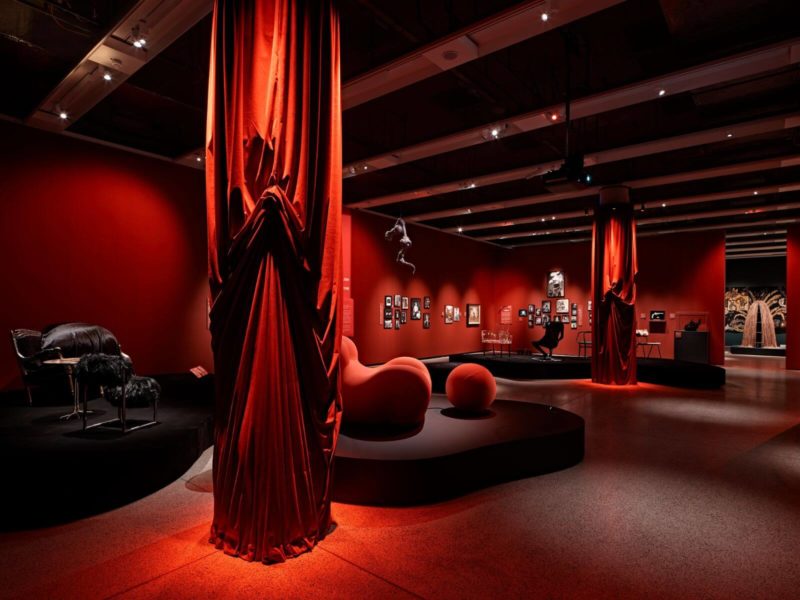
Exhibition view, ‘Objects of Desire’ at The Design Museum, London
COURTESY: The Design Museum / PHOTOGRAPH: Andy Stagg
In reconceiving the exhibition for London, the Design Museum’s curators have greatly expanded the contemporary section, drawing together work by artists and designers as diverse as the Campana Brothers, Nina Sandhaus, Nacho Carbonell, Yasmina Atta and Dunne & Raby. There is British artist Sarah Lucas’s brilliantly satirical ‘Cigarette Tits’ [Idealized Smokers Chest II] (1999) and Lebanese designer Najla El Zein’s haptically alluring, visually discordant ‘Sensorial Brushes’, exploring the unconscious and the inarticulate realm of sensuality and desire. Towards the show’s end the exhibition points to Afro-Surrealism, with its strong relationship with the dark reality of colonialism, and the potential of artificial intelligence to enable the representation of Surreal ideas.
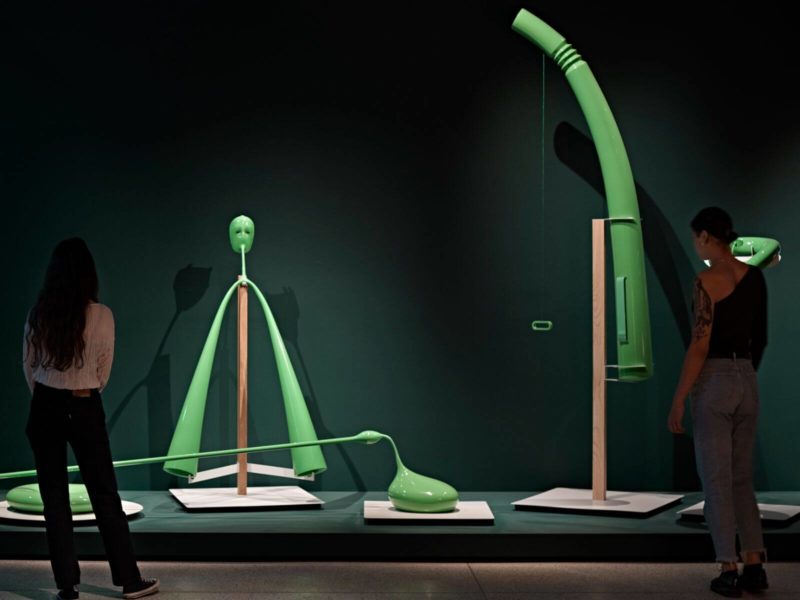
Exhibition view, ‘Objects of Desire’ at The Design Museum, London, with Dunne & Raby, ‘Designs for an overpopulated planet: The Foragers’, 2009
COURTESY: The Design Museum / PHOTOGRAPH: Andy Stagg
The danger the show runs, in its seductive theatricality and persuasive visual presentation, is that we may lose a sense of the distinctions between the different kinds of Surrealism and their specific histories. Each artist or designer may have a different target or aspect of experience they wish to address. And at what point does Surrealism become surrealism and then perhaps just poetry or imagination? The role of function – which is sometimes intrinsic to the Surrealist force of an object but sometimes ends up reducing Surrealism to a marketable style – is also not fully addressed. However, the fact that we are provoked to ask these questions is part of the success of this beautifully produced exhibition.





